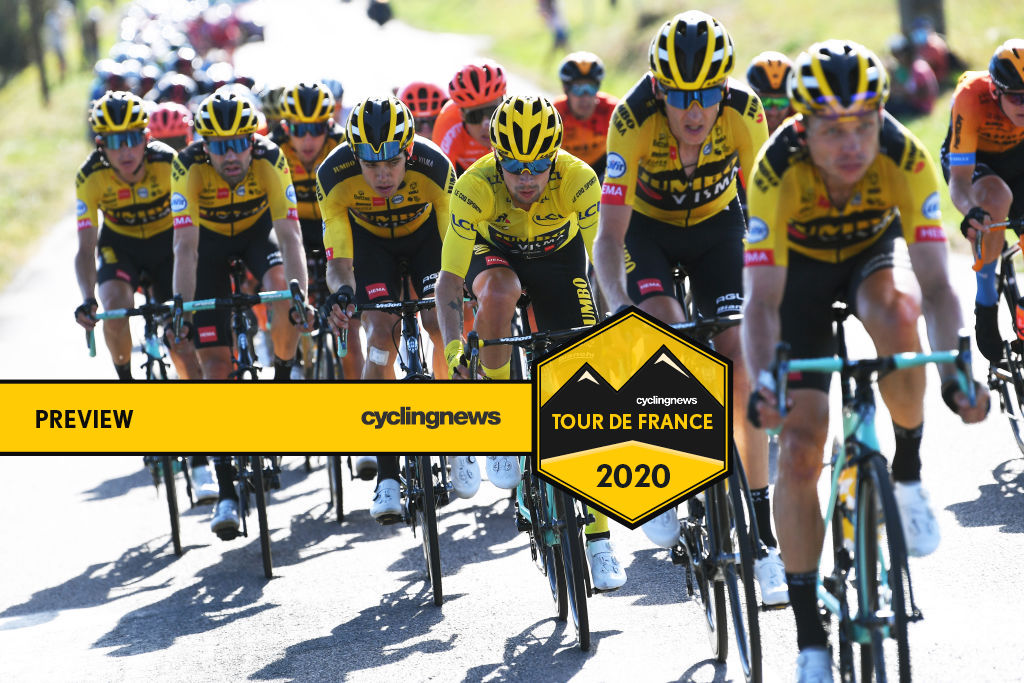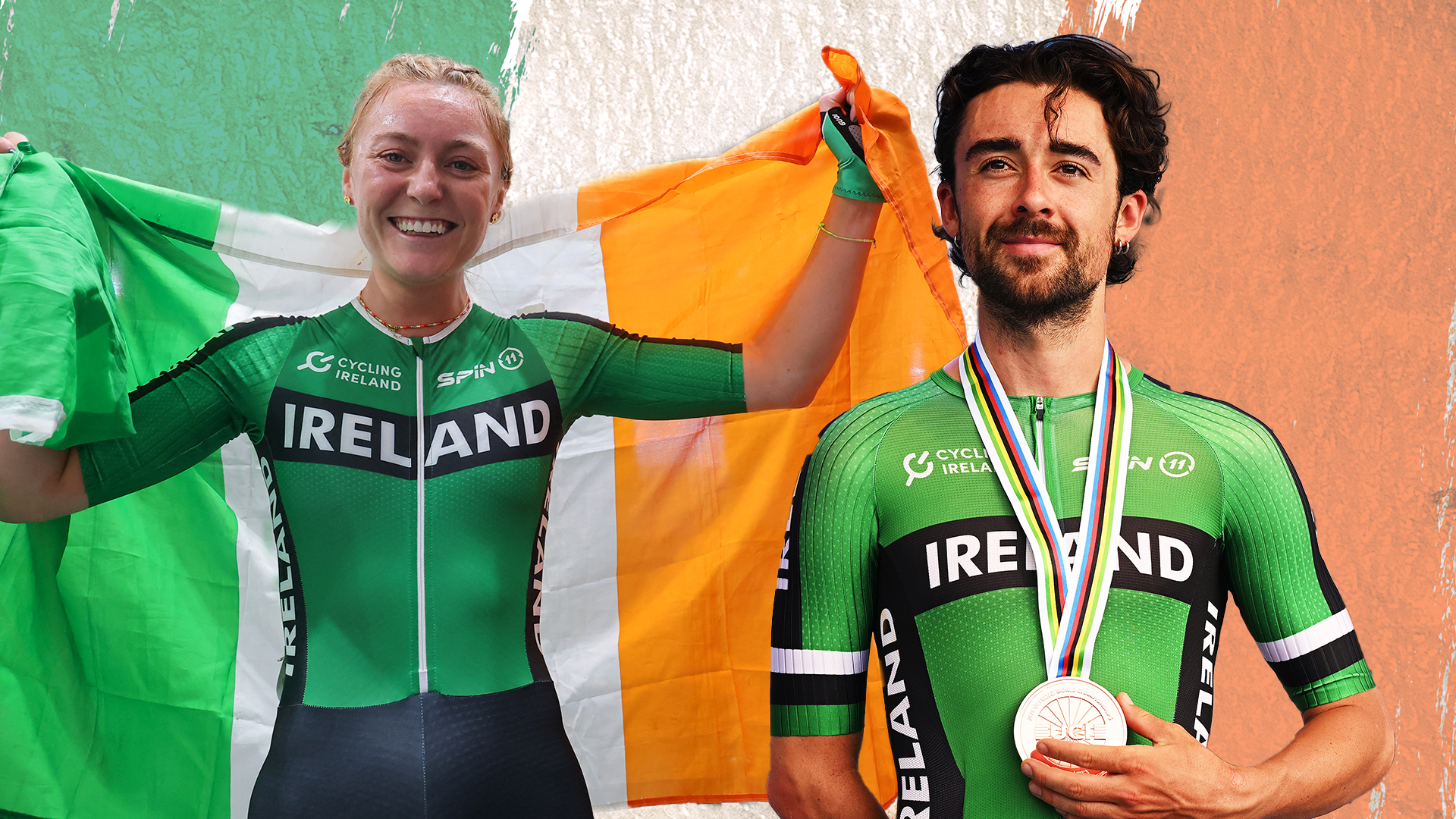Tour de France overall contenders face the Grand Colombier – Preview
Roglic the man to beat on 17-kilometre hors-catégorie summit finish to stage 15

There’s a French cycling association called the Confrérie des Fêlés du Grand Colombier, who reserve membership for riders who have successfully scaled the final climb of Sunday’s stage 15 of the Tour de France on all of its four main approach roads – with the rather important sub-clause of having to succeed in that particular endeavour in a single day.
But even if Primož Roglič (Jumbo-Visma), Egan Bernal (Ineos Grenadiers) and the rest of the top contenders at the Tour de France have not yet been up all the possible faces of the the Grand Colombier, the 17-kilometre ascent in the southernmost edge of the Jura mountain range nonetheless holds very few secrets for the big favourites this September.
The reason is the last 110 kilometres of the 174.5-kilometre stage 15, starting at the small town of Les Marches and including the Selle de la Fromentel (1st cat. km 63.5), the Col de la Biche (first cat. km 129) and the Grand Colombier itself, are a carbon copy of the Queen stage of the Tour de l’Ain, held five weeks ago.
And just to strengthen the sense of déjà vu, in the Tour de L'Ain, the leader going into that stage, the winner on the Grand Colombier and the final overall victor was – as you might have guessed – Roglič.
On August 9, Roglič had a four-second advantage at the finish line of the Grand Colombier on Egan Bernal (Ineos Grenadiers), with Nairo Quintana (Arkea-Samsic) at six, and Guillaume Martin (Cofidis) at nine seconds. Tadej Pogačar, if you’re wondering what happened to the UAE Team Emirates leader, did not take part.
So far, so promising for the Tour de France leader. But the Grand Colombier, with constant changes of gradient and pace, is a notoriously tricky climb when it comes to managing climbing strength and energy levels. And although Roglič will start as pre-stage favourite, with Pogačar his most likely challenger, on a day with over 3,500 metres of climbing and on the hardest summit finish so far of the Tour, two weeks into the race to boot, there’s really no predicting what will happen.
“The Grand Colombier is known locally as ‘the pyramid’ because it has four clear sides and the Tour peloton will be going up three of them, at least partly, on the stage,” Philippe Court, head of sport at local newspaper Le Dauphiné Libéré - which created the event now known as the Critérium du Dauphiné and ran it for many years - tells Cyclingnews.
The latest race content, interviews, features, reviews and expert buying guides, direct to your inbox!
“The side they’re taking, up from Culoz is probably the easiest of the four. But in either case, none of them are at all straightforward and the complete opposite to the Alps, even though they’re so close geographically, just on the other side of a valley.”
The Alpine ascents are mostly on broad, well-surfaced roads, with steady gradients. These are just the opposite - narrow, twisting, with abrupt gradient changes, on the Culoz side up to 12 per cent.”
It will be interesting to see, too, if history repeats itself in other ways. Six weeks ago in the Tour de l’Ain, Ineos Grenadiers opened up the final series of pace-setting from the foot of the climb. That was with Andrey Amador and Jonathan Castroviejo - both present here in the Tour – handling the first part of the ascent alongside a certain Chris Froome and Geraint Thomas – both most definitely missing.
But when push came to shove, on the upper segment of the climb, once Castroviejo swung over Bernal was isolated and still had four Jumbo-Visma riders left to handle. Although the Colombian launched one attack in the last kilometre, and managed to sweep most of the opposition off his tail, Roglič had no problem charging past to drop Bernal, take the stage win, and the overall.
The immediate precedents of the Grand Colombier in cycling history are not encouraging for Bernal, then, and neither, you might add, is his current predicament in the Tour. Bernal, at least on paper, has to gain time on Roglič in order to have any chance of keeping the Slovenian at arm’s length on GC in the final race against the clock – where Roglič is almost certain to be superior – next Saturday.
Furthermore, the Colombier’s 1,200 metres of vertical climbing, from the town of Culoz, situated on the edge of an extensive marshland, to its summit at 1,501 metres above sea level in dense woodland are not the type of high altitude ascent that could favour the Colombian the most. The only finish of that kind on offer this year in the Tour will come in the Alps, a little further south-east, more specifically on Wednesday at Meribel, when the Tour goes up to 2,300 metres above sea level..
Those with longer memories in Ineos, too, might remember that Ineos-Sky do not have altogether happy memories of the Grand Colombier. In 2012, in one of the few moments that Bradley Wiggins was threatened by a rival in the Tour, Vincenzo Nibali launched a furious downhill assault on Bradley Wiggins coming off the climb. On the notoriously tricky descent, Nibali opened up a gap, and even could count on his teammate Peter Sagan, part of an early break, to stay away. Sky reeled the shark of Messina back in before the finish, but it was a narrow squeak nonetheless.
That ascent kicked off a tradition of the Tour venturing up one or another side of the Grand Colombier for a total of five times since 2012.
“Le Grand Colombier traditionally has been the centrepiece of the Tour de L’Ain, it’s right in the middle of one of its most famous regions, called La Bugey” – whose inhabitants, the Bugistes, speak their own language, Savoret, and briefly formed their own kingdom – “but since 2012, it’s become a bit like La Planche des Belles Filles, a fixture in its own right in the Tour de France,” Court tells Cyclingnews.
One piece of good news for all the riders is the weather is set to be dry. This will be of particular importance for the riders on the second climb of the stage, the Biche, where Geraint Thomas fell heavily in 2017 on a very dangerous, rainsoaked descent. “They go down the opposite direction to that year, but even so, that’s better for everybody. The descents can be extremely treacherous on the Colombier,” Court points out.
One difference with previous editions is that there will be no members of the public to cheer Bernal and the rest of the peloton. The Ain authorities have decreed that no fans will be allowed on the Biche and Grand Colombier, as part of the anti-COVID-19 precautions that already limited numbers of fans at Saturday’s finish in Lyon, and two weeks ago, in the Grand Départ city of Nice, which was also declared a zone rouge.
The effects of the pandemic could, once again, be felt by the Tour in a much more unwelcome way on Tuesday when the results of the second round of COVID-19 testing are published. But on Sunday, in any case, the bunch will have enough on their plate in the toughest climbing stage of the Tour so far to be thinking much further ahead than the finish line of the Grand Colombier.
Alasdair Fotheringham has been reporting on cycling since 1991. He has covered every Tour de France since 1992 bar one, as well as numerous other bike races of all shapes and sizes, ranging from the Olympic Games in 2008 to the now sadly defunct Subida a Urkiola hill climb in Spain. As well as working for Cyclingnews, he has also written for The Independent, The Guardian, ProCycling, The Express and Reuters.

